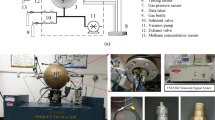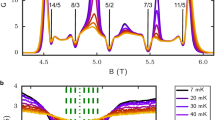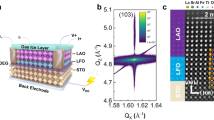Abstract
AFTER flame has travelled through an inflammable gaseous mixture the gases remaining are not merely hot CO2, etc. They emit luminous radiation for a long time (if their temperature is kept up), their temperatures as determined by the sodium line reversal method are too high, and they have associated with them a long-lived latent energy which amounts to a considerable proportion of the heat of combustion. The evidence for this has been summarised in a recent article in the Engineer1.
This is a preview of subscription content, access via your institution
Access options
Subscribe to this journal
Receive 51 print issues and online access
$199.00 per year
only $3.90 per issue
Buy this article
- Purchase on SpringerLink
- Instant access to full article PDF
Prices may be subject to local taxes which are calculated during checkout
Similar content being viewed by others
References
"Temperature and Latent Energy in Flame Gases”, Engineer, June 1, 1934.
Proc. Roy. Soc., A, 142, 362; 1933.
"Gaseous Combustion at High Pressures". Bone, Newitt and Townend . (Longmans, 1929.) Pp. 196.
Author information
Authors and Affiliations
Rights and permissions
About this article
Cite this article
DAVID, W. Spectra and Latent Energy in Flame Gases. Nature 134, 663 (1934). https://doi.org/10.1038/134663a0
Issue date:
DOI: https://doi.org/10.1038/134663a0
This article is cited by
-
Spectra and Latent Energy in Flame Gases
Nature (1935)



